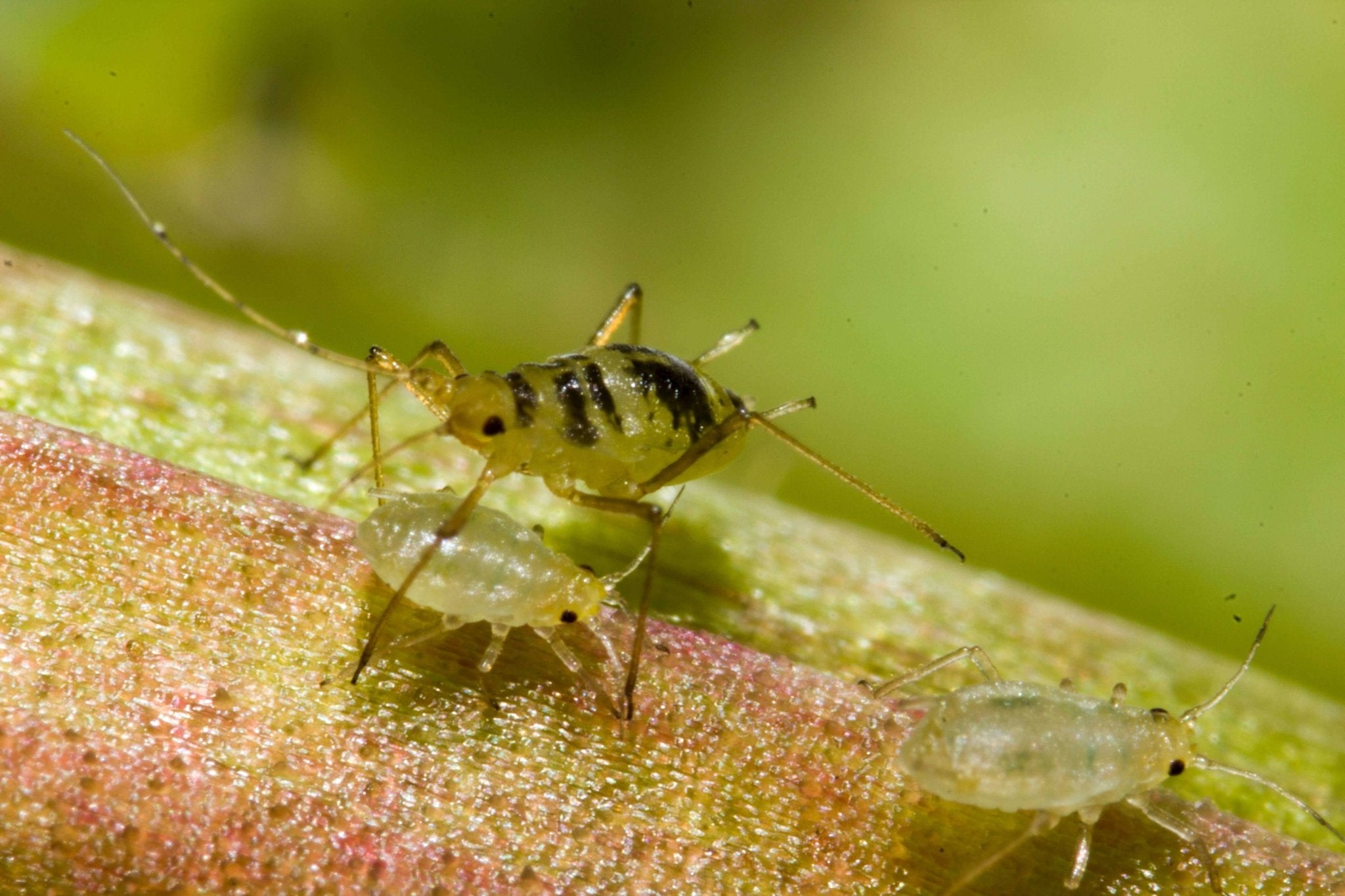Aphids may not strike the same level of fear in growers that bud rot or powdery mildew usually do, but they are still a pesky grow room infestation. The sight of a swarm of tiny, almost invisible insects lingering on your buds means it's time to take action.
At their best, aphids are annoying. At their worst, they can take over your bloom room, damaging and perhaps destroying an entire harvest.
It's not always easy to get these pests under control, so it's worth knowing how to identify fungus gnats and how to get rid of them.
What are Aphids?
Aphids are small. We are talking almost invisible to the human eye. They come in a host of colors, from green to black to white to brown. Most don't have wings, although there are a few species that do (don't confuse them with fungus gnats!)
Aphids can reproduce asexually, which means without mating. Females may continue to lay eggs for up to 12 days without mating. From egg to mating, the full life cycle can happen quickly, in as little as seven days. Because of this rapid and asexual reproductive cycle, one aphid is too many in your grow room.
Usually, you'll find aphids around the fresh growth of your plants. This means the new shoots of young plants or the flowers of more mature plants.
They prefer new growth because aphids are sapsuckers. They bite into stems and leaves to suck out the nutrients and water readily available in new growth.
Aphids are common pests across the agricultural world and a relatively rare occurrence in cannabis cultivation. But, they do occur, and because they most often appear during bloom, it can be very challenging to control without damaging the harvest.
What are the Signs of Aphids?
You may never notice the solitary aphid wandering across the bottom of a leaf, but a cluster of these sapsuckers is hard to ignore.
Monitor your plants daily, paying particular attention to new growth, flowers, and the undersides of leaves.
Keep your eyes peeled for small, soft-bodied insects clustering together in congregations and/or evidence of their sticky excretion.
Signs of an Aphid Infestation
- Infestation begins on the underside of leaves, near new growth.
- Visible honeydew remnants (the sticky excretion of aphids)
- Ant infestation, which feeds on honeydew drops
- Black mold, which thrives on honeydew drops.
- Wilted and curled leaves.
- Yellowing leaves.
- Stunted new growth
Is your indoor grow experiencing an infestation, and it doesn't seem to be aphids? Check out our complete guide to pests and disease in the grow room for more resources.
How to Prevent Aphids?
Aphid infestation can escalate quickly. A few pesky bugs can, and will, explode into a full disaster. When it comes to aphids, prevention is key.
Prevention begins with careful inspection of seedlings and clones. Before bringing them into your grow room, carefully inspect for signs of any pest or disease. Some growers put their new plants through a quarantine period before allowing them into their primary grow spaces.
Daily monitoring is the next step. Take time to inspect new growth and the bottoms of leaves for evidence of aphid and honeydew. Use an LED Loupe for a close up inspection.
You'll likely only find a few clusters on one or two plants in the early phases of infestation. Gently wash the clusters off using a hose, spray bottle, or cloth.
In later phases, it may be necessary to perform more drastic interventions. If a small cluster has grown to cover a cola or leaf intersection, it's time to remove the area. Prune away the infestation. Do not place in the compost.
In some cases, you may have to remove and dispose of an entire plant. Keep a close eye on its neighbors over the coming days to ensure the aphids have not continued to spread.
Integrated Pest Management (IPM) is another option. One of the tactics is introducing the aphid's natural enemies, like ladybirds, or biological controls like parasitoids.
Aphids Are Hard to Control But Easy to Spot
Most growers experience the challenges of aphids in their veggie garden or on house plants long before they see them crop up in the grow room. But aphids are a growing concern among commercial growers, likely because there are more commercial growers than ever before.
By some reports, more than 15 percent of California growers in 2018 battled these tiny pests. Especially for outdoor operations, the battle against aphids is an ongoing one.
Taking the time to sterilize equipment, seal grow rooms, and monitor plants are key steps to prevention. If an infestation does occur, catching it early usually means you can get it under control.
However, taking aggressive action in serious population explosions - going as far as drastic pruning or plant removal, can help protect the rest of your crops.





